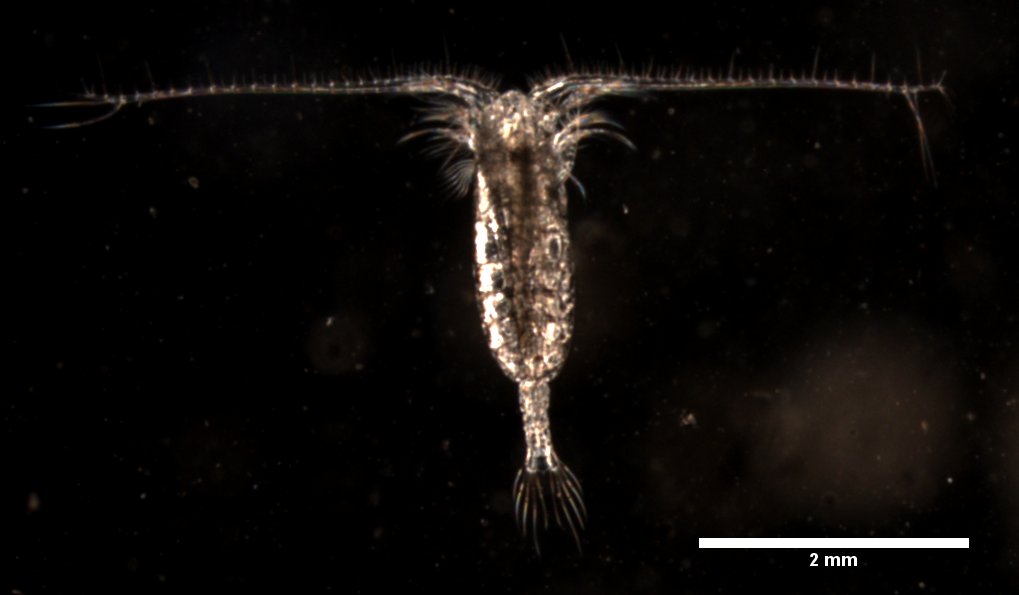 spcadmin
spcadmin
Nice Image of a Calanoid Copepod
A nice example of perhaps Calanus pacificus
Six Month Cleaning and Maintenance
Last week we completed our six month maintenance on the cameras. This included pulling both cameras out of the water, extensive cleaning of the housings and frame, and fixing several issues. In addition, we migrated most of the optical ports to sapphire and added UVC LEDs in a test configuration to study how they might be used to reduce bio-fouling.
Below are a few photos of the cameras after being pulled out of the water and cleaned.
New Copper Mesh Installation
You may have noticed recently that the SPC2 camera with the 1-5 mm size preset shows lots of fish fins lately. This is a result of a rather large school of small (0.5 to 5 cm) long fish that have started using the cameras as a shelter. Today we removed the previous copper mesh with a 1.2 cm opening and replaced it with a 0.5 cm opening mesh. This should be smaller than the majority of fish around the cameras and will hopefully limit the number of nuisance images of fish fins. The video below shows the new mesh installed and the plethora of fish surrounding the cameras. In addition we recorded some footage of the amazing visibility today and some other ocean friends.
Server Updates
We had a short downtime today while the software software was updated to the latest version.
Camera Cleaning
We (Eric and Paul) dove on the cameras today to do a much needed cleaning. The SPC2 strobe port was highly fouled again resulting in a bright background in the images. To mitigate this, we added a black shroud around the sun facing side of the SPC2 ports to block direct sunlight from hitting the up looking port. We hypothesize that this was the primary cause of the rapid bio fouling on that port.
Cleaning Dive
Eric and Paul cleaned the cameras today. The SPC2 strobe port was very fouled (see video below) but otherwise the ports were not too bad. We removed lots of growth on the system and verified the pumps are still working.
Copper Mesh Installation
We have recently been seeing lots of images of fish fins in the SPC2 data. It turns out that several juvenile Garibaldi and other small fish have decided that the camera ports make a nice home and perhaps even a good place to catch plankton. To help keep these fish out of the field of view of the cameras, we installed 0.5″ opening copper mesh around each camera on Monday this week. Below is a video showing the result of the installation and several of the fish that were previously swimming around in the field of view.
Camera Cleaning Dive
Yesterday Paul and Eric dove on the cameras for about an hour of cleaning. There was a lot of growth, especially on the south facing side of the SPC2 camera. We recorded before and after videos of the cameras to show how much grow occurs over a 2 month period and how much we were able to remove in one dive.
